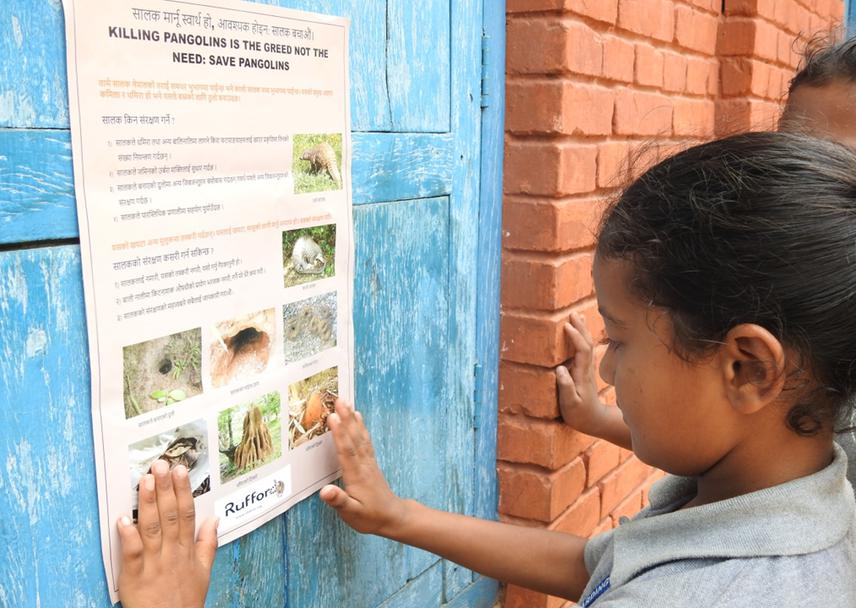Sandhya Sharma
Other projects
5 Sep 2018
Assessing Chinese Pangolin Status and Conservation through Community Engagement and Awareness Building in and Around Gaurishankar Conservation Area, Nepal
This study aims to conserve the Critically Endangered Chinese pangolin (Manis pentadactyla) through capacity development, research and community awareness programs in Sindhupalchok district. Capacity of local youths and institution like District Forest Office, and Community Forest User Groups will be developed for field design and monitoring techniques of pangolins at local level. Additionally, spatial distribution of the pangolins will be studied as well as trade and ethno-zoological uses, and existing threats to pangolins will be identified through semi-structured questionnaires. Finally, awareness program will be carried out to communities, school children and other people using posters, audio-video, radio interviews etc. highlighting the importance of pangolins in eco-system.

Student’s involvement in pasting of the posters.
This project is designed for the conservation of Chinese pangolin in Sindhupalchok district through capacity development of local youths, community forest user groups as well as district forest office, as most of the pangolins lie outside the protected areas. The project will be undertaken in Chautara municipality and its three adjacent Villages of Sindhupalchok district. The localities will be identified through discussion with District Forest Office and key informants. By selecting staffs of District Forest Office and of Community Forest User Groups from each villages and local youths, capacity building training on the field design, data collection and monitoring techniques will be provided through lectures and field visit. As Sindhupalchok is identified as one of the trade route for pangolins towards Tibet, detail of ten years trade data will be searched and reviewed from District Forest Office and the Nepal Police Office to understand the trade flow. Similarly, systematic grid will be overlaid on the study area and spatial distribution of the pangolins will be studied.
Using semi-structured questionnaires to the local people, traders, government officials, herders, teacher’s etc. socio-economic status of the people, ethno-zoological importance of the pangolins (uses of pangolins body parts), motivating factors for pangolin hunting’s, needed conservation measures etc. as well as other existing threats will be identified. After identifying the cause and extent of threats, awareness program will be carried out at District Forest Office, Nepal Police, local people, community forest user groups, and school children using posters and leaflets (highlighting the importance of pangolin and threats that will harm them) along with the audio-video programs. At schools essay and quiz competitions regarding the pangolin will be carried out and winners will be awarded with the prize and hiking will be organized to around 60 students to show and identify the pangolin burrows in their locality. In addition, support of local F.M and print Medias will also be taken for raising awareness against hunting and poaching of the pangolins.